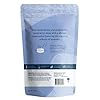Body Restore Shower Steamers Aromatherapy 15 Packs - Mothers Day Gifts, Relaxation Birthday Gifts for Women and Men, Stress Relief and Effortless Self Care, Lavender Bath Bombs
$29.99 ($2.00 / Count) (as of May 14, 2024 02:00 GMT +00:00 - More infoProduct prices and availability are accurate as of the date/time indicated and are subject to change. Any price and availability information displayed on [relevant Amazon Site(s), as applicable] at the time of purchase will apply to the purchase of this product.)Google Verizon Pixel 7-128GB - Lemongrass - GA03543-US
$209.99 (as of May 14, 2024 01:59 GMT +00:00 - More infoProduct prices and availability are accurate as of the date/time indicated and are subject to change. Any price and availability information displayed on [relevant Amazon Site(s), as applicable] at the time of purchase will apply to the purchase of this product.)Python is a multi-paradigm programming language. It supports different programming approaches including structured programming, functional programming and object-oriented programming. In this article, we will focus on object-oriented programming (OOP) in Python.
Object-oriented programming models real-world entities as software objects that have attributes and behaviors. OOP allows for organized code and building maintainable applications. Python fully supports OOP and its key concepts like encapsulation, inheritance, and polymorphism.
Classes and Objects
The basic unit of OOP is a class. A class is like a blueprint for creating objects. We define classes to create user-defined objects that model real-world entities. For example:
# Python class example
class Person:
def __init__(self, name, age):
self.name = name
self.age = age
def greet(self):
print(f"Hello, my name is {self.name}")
p1 = Person("John", 36)
p1.greet() # Hello, my name is JohnHere we define a Person class with a constructor to initialize name and age attributes. self refers to the current instance. We also define a method greet() that prints a greeting using the name attribute.
The p1 object is an instance of this class. We can access its attributes and methods directly. OOP allows defining reusable classes to create any number of similar objects.
Inheritance
Inheritance allows a new class to be defined as an extension of an existing class. The new child class inherits attributes and behaviors of the parent class. The child class can define new attributes and override parent class methods.
For example:
class Employee(Person):
def __init__(self, name, age, id, salary):
super().__init__(name, age)
self.emp_id = id
self.salary = salary
def work(self):
print(f"{self.name} is working...")
e1 = Employee("Richard", 32, 435, 60000)
e1.work() # calls method on child class
e1.greet() # calls method from parent classThe Employee class inherits from Person and extends it with id, salary attributes and work() method. Inheritance allows code reuse and modeling intuitive hierarchical relationships.
Encapsulation
Encapsulation refers to binding data and functions into a single unit called class. Class attributes can be accessed directly but private attributes are name-mangled to prevent accidental access. Methods enforce valid access to attributes.
For example:
class BankAccount:
def __init__(self, balance=0):
self.__balance = balance
def deposit(self, amount):
self.__balance += amount
def withdraw(self, amount):
if self.__balance >= amount:
self.__balance -= amount
else:
print("Insufficient funds")
def get_balance(self):
return self.__balanceHere the balance attribute is private. The deposit() and withdraw() methods ensure valid balance updates. Encapsulation allows finer control over class attributes.
Polymorphism
Polymorphism refers to syntax allowing different behaviors based on run-time types. In Python, polymorphism is primarily achieved via duck typing – using methods defined by different classes interchangeably.
For example:
class Rectangle:
def area(self):
return self.width * self.height
class Circle:
def area(self):
return math.pi * (self.radius ** 2)
def total_area(shapes):
total = 0
for shape in shapes:
total += shape.area()
return total
shapes = [Rectangle(...), Circle(...)]
print(total_area(shapes))The total_area() function can compute total area regardless of object type. This polymorphism allows generalizing method calls based on suitable interfaces.
Special Methods
Python classes can implement special methods like:
__init__: Constructor__str__: String representation__add__: Customize+operator__len__: Object length__eq__: Equality check
For example:
class Point:
def __init__(self, x=0, y=0):
self.x = x
self.y = y
def __str__(self):
return f"({self.x}, {self.y})"
def __add__(self, other):
x = self.x + other.x
y = self.y + other.y
return Point(x, y)
p1 = Point(1, 2)
print(p1) # calls __str__
p2 = Point(2, 3)
p3 = p1 + p2 # calls __add__Special methods allow customizing common language operations for user-defined classes.
Properties
Python properties provide getter, setter and deleter functionality for class attributes. They allow controlling attribute access without exposing private attributes.
For example:
class Student:
def __init__(self):
self._gpa = 0
@property
def gpa(self):
return self._gpa
@gpa.setter
def gpa(self, value):
if value < 0 or value > 4:
raise ValueError("GPA must be between 0 and 4")
self._gpa = value
student = Student()
student.gpa = 3.5 # calls setter
print(student.gpa) # calls getterHere the gpa attribute is private _gpa. The @property decorator exposes it via getter/setter methods.
Class Inheritance Hierarchy
All Python classes inherit from the base object class. Useful built-in hierarchies include:
Exception– Base for user-defined exceptionsint,str,float– Numeric typeslist,dict,tuple– Collection typesfile– File handling
We can easily extend these built-in types.
Abstract Base Classes
Abstract base classes define interfaces for their subclasses. Python ABCs provide some common interface methods @abstractmethod that child classes must implement.
For example:
from abc import ABC, abstractmethod
class Vehicle(ABC):
@abstractmethod
def num_wheels(self):
pass
@abstractmethod
def start(self):
pass
class Car(Vehicle):
# must implement abstract methodsHere Vehicle defines the interface for all vehicles. Concrete classes Car must provide implementations.
Mixins
A mixin class contains methods intended for reuse by multiple child classes. Mixins provide Horizontal code reuse complementing vertical reuse from inheritance.
For example:
class LogMixin:
def log(self, message):
print(f"{self.__class__.__name__}: {message}")
class Person(LogMixin):
def say(self, message):
self.log(message)
p = Person()
p.say("Hi there!") # Person: Hi there!The standalone LogMixin class provides reusable logging functionality easily added to other classes via multiple inheritance.
Conclusion
Python is an effective object-oriented programming language. Key OOP concepts like inheritance, encapsulation, and polymorphism allow for code reuse and abstraction. Special methods customize classes while properties provide control over attribute access. Python OOP features enable the development of reusable and maintainable programs. Understanding OOP principles is important for mastering the Python language.



















